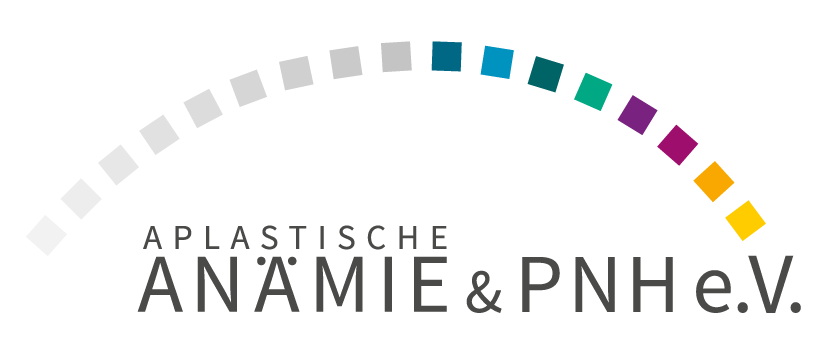
Increasingly, new medicines for the treatment of AA and PNH are being developed. Some of them are already tested in clinical trials, others will follow. Maybe you thought about participating in a clinical trial or were invited to do so. Before you make a decision it is important that you know what a participation would mean for you. What pros and cons could arise? What are the potential risks? In any case you should consider your decison carefully. Below you will find brief explanations of some of the terms frequently used in connection with therapy studies. Comprehensive information is available in the brochure Therapiestudien in der Hämato-Onkologie (German).
The brochure mainly addresses leukaemia and lymphoma patients however the descriptions are valid for all clinical trials.
EXPLANATION OF IMPORTANT TERMS
Therapeutic studies serve to test a new treatment concept or drug. Usually a newly developed drug is compared with the standard therapy or a sham drug (without effect, placebo). The sponsor of a clinical trial is either a pharmaceutical company, or the trial is planned by doctors, researchers or university research groups, then it is called an academic trial (Investor-Initiated Trial, IIT). inclusion/exclusion criteria regulate who can take part in a study and at what stage, for example the age, sex and health status of a person. Before a study is approved, it must be approved by anethics committee The ethics committee examines the study with regard to its medical, scientific and ethical significance, compliance with legal requirements and the qualifications of the persons and organisations conducting the study. A proband insurance serves as a cover in case of health damages caused by the treatment in the study. The insurance pays for rehabilitation and, if necessary, required home reconstruction measures as well as financial losses, for example in the event of reduced earning capacity.
Studies are divided into different criteria , one or more of which may apply to a study:
controlled The results of the trial group that receives the drug under investigation are compared with the results of a control group that receives, for example, the standard therapy.
randomized
Participants are randomly assigned to one of the groups (arms).
(single) blind
The participant does not know whether he or she is receiving the trial drug.
double-blind
Neither the doctor nor the participant knows whether the participant is receiving the study drug or the comparison drug.
In phase I of a study, the tolerability and safety of the study drug is tested. This includes the effect of the drug and its absorption, distribution and metabolism in the body, as well as determining the correct dose. In this phase, only a small group of volunteers takes part.
Based on the findings from phase I, the drug will be administered to a larger number of test persons in phase II The aim is to confirm the correct dose determined in phase I and to document the side effects accurately.
In phase III , the efficacy and safety of the drug is to be proven. Only with this proof can the drug be approved. This part of the trial is often conducted at several centres.
Phase IV begins after approval. During this phase, the long-term tolerance and side effects are investigated, which were not observed in previous phases due to their possibly rare occurrence. Since all patients receiving the drug are included in phase IV, a comparatively large number of patients is taken into account.
AA
EMAA (Efficacy and Safety of Eltrombopag + CSA in Patients With Moderate Aplastic Anemia) forpatients with moderate Aplastic Anaemia (MAA) and no prior specific treatmentwho need to be treated with ciclosporin
RACE (equine ATG + Ciclosporin + Eltrombopag versus equine ATG + Ciclosporin) for patients with severe or very very severe Aplastis Anaemia (SAA or vSAA)
PNH
Download of list as Excel document with explanation of mentioned terms. We publish this list in cooperation with Stiftung lichterzellen.
[table id=”1″ /]

